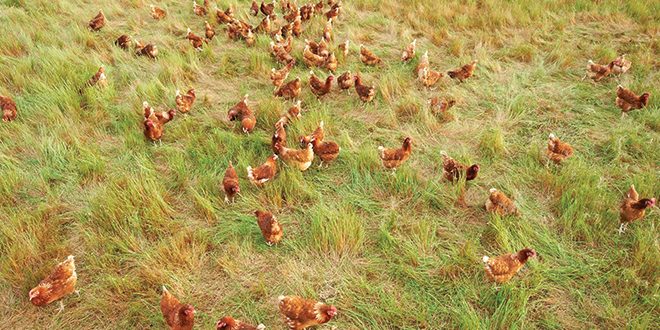ABOVE: An Australian free range egg farm. Some diseases lead to the destruction of entire flocks and can spread to neighbouring properties.
During the first half of this year, we saw outbreaks of various diseases in laying flocks in some parts of Australia that had unwanted consequences for egg producers.
Quite a few diseases lead to the destruction of entire flocks and can spread to neighbouring properties.
Dr Rod Jenner is a vet and poultry industry consultant who has helped to devise the following check list of diseases that are the main concern for the nation’s egg industry.
Avian influenza
Avian influenza or bird flu is a type A influenza virus.
It is lethal to poultry and is potentially fatal in humans.
Bird flu spreads between both wild and domesticated birds.
It has also been passed from birds to humans who are in close contact with poultry or other birds.
Newcastle disease
Newcastle disease is caused by a para-myxo virus and is highly contagious.
Birds affected by this disease are chickens, turkeys, geese, ducks, pheasants, partridges, guinea fowl and other wild or captive birds, including ratites such as ostriches and emus.
Australian egg producers are required to vaccinate their hens for Newcastle disease.
There is an additional risk in that strains of Newcastle disease could be introduced into Australia and then mutate.
Infectious laryngotracheitis
Infectious laryngotracheitis is a highly contagious respiratory disease of chickens.
It can cause significant problems in unvaccinated or poorly vaccinated flocks.
Salmonella enteritidis
Salmonella enteritidis is a bacterial disease of poultry and can cause foodborne illness in humans such as gastroenteritis – commonly known as gastro – when contaminated food is consumed.
The infection is almost impossible to eradicate from a flock, so birds must be euthanised.
The disease can even be carried inside eggs.

Poultry vet and consultant Dr Rod Jenner.
Salmonella typhimurium
Salmonella typhimurium is the most common cause of human gastroenteritis that can be attributed to the consumption of eggs.
Infection of hens is usually subclinical and difficult to detect.
Biosecurity measures to keep it out of farms, along with vaccination and in-feed preventatives, are the most effective control measures.
Salmonella pullorum
The Australian commercial chicken industry is free of salmonella pullorum.
Testing does occur in order that a certificate can be issued providing evidence of an SP-free flock.
This is important for export purposes.
Salmonella gallisepticum
Salmonella gallisepticum is commonly involved in a disease known as polymicrobial chronic respiratory disease.
In layer hens and breeders, it is usually subclinical but causes a reduction in the number of eggs laid per hen over the production cycle.
Once infected, flocks can become carriers.
This virus is exotic to Australia.
Overseas strains
The egg industry must be vigilant to signs of any form of foreign disease.
The key issue is that overseas disease incursions could mutate and combine with local strains, leading to new variants.
This was the case for COVID-19 in humans.
Links
The following links provide further resources on poultry disease for egg farms.
Agriculture Victoria avian influenza – agriculture.vic.gov.au/biosecurity/animal-diseases/poultry-diseases/avian-influenza-bird-flu
Australian Eggs avian influenza guidelines – australianeggs.org.au/for-farmers/resources/avian-influenza-guidelines
Australian Eggs salmonella-enteritidis response plan – australianeggs.org.au/what-we-do/leading-research/salmonella-enteridis-response-plan
Agriculture Victoria salmonella enteritidis – agriculture.vic.gov.au/biosecurity/animal-diseases/poultry-diseases/salmonella-enteritidis
Dr Rod Jenner
Poultry Vet and
Consultant

